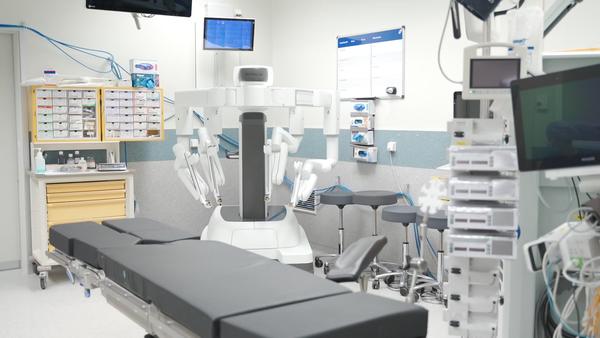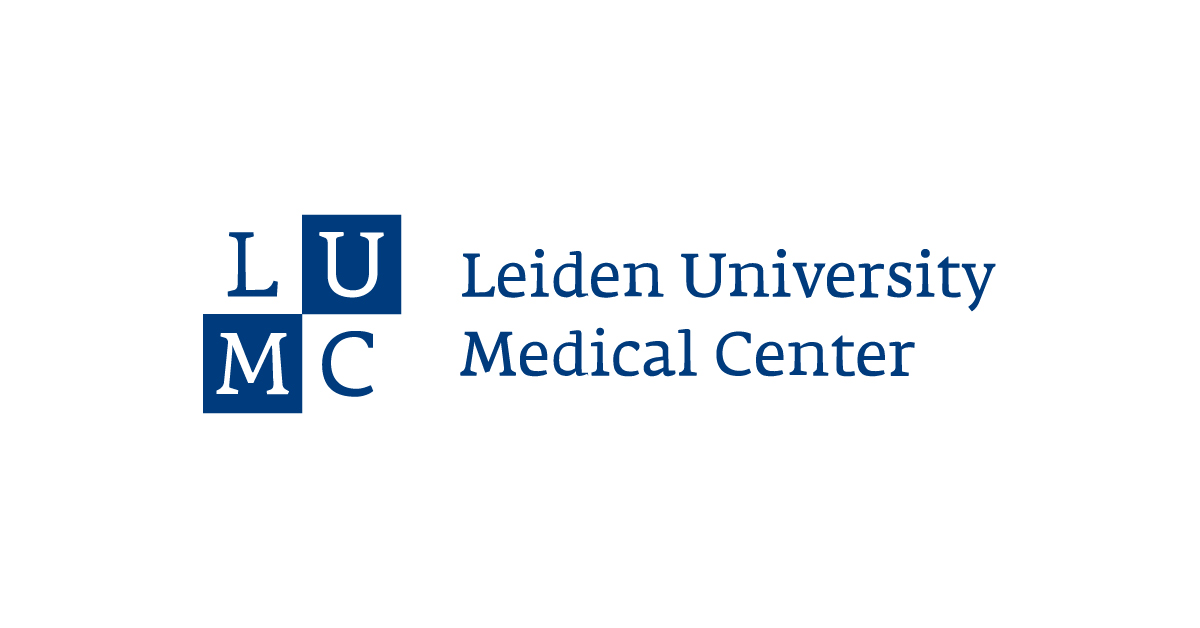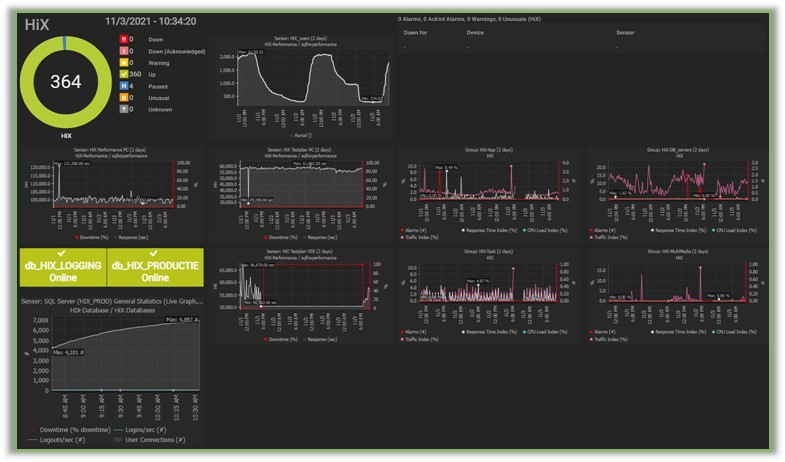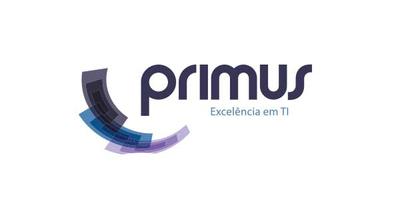Leiden University Medical Center successfully treats its hospital IT system with Paessler PRTG
About Leiden University Medical Center
Leiden University Medical Center (LUMC) is a modern university medical center for research, education and patient care with a high quality profile and a strong scientific orientation. At the LUMC students are trained in lifelong innovating and learning. Researchers let themselves be inspired and test their findings directly in practice. Patients can count on being helped according to the state-of-the-art of science. The LUMC believes in curing but also in prevention.
Leiden University Medical Center (LUMC) is the teaching hospital associated with Leiden University/Netherlands. The hospital is a partnership between Leiden University Hospital (AZL) and the Faculty of Medicine at Leiden University.
Patients can rest assured that LUMC uses the latest science and technology in their care. LUMC believes in prevention as well as cure. By involving companies and organizations from the local area – and beyond –, LUMC makes innovation and new applications genuinely possible. This is how the university medical center wants to play a pioneering role in developing solutions to healthcare matters.

“In 2019, we decided to switch to a new network monitoring system. The requirement at the time was to work with a system where various elements could be monitored from within a single environment. This means monitoring the health of the network 24 hours a day and also, by extension, the health of the patients.”
Willem Bouwman, Technical Applications Manager at LUMC
Specialist care
LUMC is a university hospital with numerous departments providing specialist care. One aspect essential to guaranteeing that care is smooth-functioning IT. Which is why the hospital has a central IT team to monitor the network. There are also IT specialists working in the various departments at the hospital. For instance, the health of the network is monitored 24 hours a day, and so, by extension, is the health of the patients.
In 2019, LUMC decided to switch to a new network monitoring system. Eventually, they picked Paessler PRTG Network Monitor. They wanted to work with a system where various elements could be monitored from within a single environment. “We started implementing Paessler towards the end of that year, and from then on things all happened really quickly. We chose the PRTG system because of the large number of users, its flexibility and the ability to monitor medical equipment,” explains Bouwman.
And that has gone down very well. The central IT team that works with Paessler, representing 1.5 FTEs, is giving rave reviews – as are the end-users in the various departments. In fact, the system has proved so popular that the initial license soon turned out to be too small. “Owing to its popularity among our colleagues, we upgraded last year and are now using PRTG Enterprise Monitor. There are now about 20 servers within LUMC using PRTG and 1,000 servers running in PRTG. To inspire enthusiasm among my colleagues, I arranged in-house training sessions.”
Working with PRTG
In its own words, the LUMC is quite “stuck in its ways”. The IT department especially likes to do everything themselves. This has upsides, but also downsides. For instance, this type of implementation can sometimes take some time, although that was certainly not the case with Paessler. The advantage working this way is that Bouwman’s team knows exactly how the various systems are designed and how they are set up.
Bouwman claims the installation of PRTG was very easy and implementation went smoothly. Following initial setup, it has been a matter of expanding and developing. “Implementing PRTG went very smoothly, which was great. We consulted Paessler’s Knowledge Base to help. It holds a great deal of useful information.”
The various departments at the hospital are free to decide for themselves how they organize their monitoring. The neonatal department (NICU), for instance, has outsourced monitoring to third parties. “Our role as central IT team here is then to monitor that monitoring. So we can always be confident everything is working properly. But the departments themselves always decide whether to convert their systems to Paessler. Either way, it’s easy for us to add them to PRTG.”

Benefits

The LUMC previously also worked with another monitoring tool (SCOM). But now that they’re working with PRTG, the hospital has noticed that Paessler’s interface is a lot faster. And the way information is displayed when you open a sensor is very intuitive. “With Paessler, we can see all the crucial information together at a glance. This provides instant insight into what is going on. We even display the dashboards around the hospital on large TV screens. This means all staff get the same important information.”
PRTG runs virtually at LUMC. To monitor the monitoring system, LUMC has opted for a second PRTG environment that is set up to monitor the first system. The second environment is physical, says Bouwman, to monitor the virtual servers. “PRTG gives us confidence and total oversight of our current systems status. This significantly reduces the burden on the healthcare sector.”
Every hospital department that uses PRTG can set up its own environment. “It’s the power of flexibility that makes PRTG a serious proposition. This means departments can decide for themselves what they want to monitor. In Radiotherapy they went completely wild! That’s something I like to see. The freedom to organize things yourself is a real advantage.”
This freedom is also reflected in how the API is used. “We have built up our own Data Warehouse. We now have more than 1,000 servers running in PRTG. It is the perfect solution for monitoring extremely broadly and flexibly,” concludes Bouwman.
One example of this is the availability of the HiX environment. This is the central application for the transmission and processing of patient-related data from LUMC. PRTG monitors the HiX environment 24/7 with various sensors.
Thanks to consolidation, the sensors show the status of the systems at a glance for those responsible.
Conclusion
Implementing PRTG was the best decision for the IT department at LUMC. Bouwman even dares to say that every user within his organization is full of enthusiasm, if only because of the popularity of the system. Colleagues from other departments are curious and come and take a look at the monitoring system.
Get to know more happy PRTG customers
Customer success story Mais Dados Digital & PRTG
With PRTG, Mais Dados Digital was able to avoid 80% of the unavailability problems that previously occurred in clients’ systems and processes. ➤ Read the complete customer success story now!
Customer success story Primus TI & PRTG
One of Primus TI’s differentiators is to deliver replicated, up-to-date, and always available hosting, which is ensured with PRTG. ➤ Read the complete customer success story now!
Customer success story Sicoob & PRTG
PRTG allowed Sicoob to better manage the WAN network, giving them a view of the network that telecom operators couldn’t deliver. ➤ Read the complete customer success story now!
We are happy to help!
Do you need more information, a live demo of PRTG Enterprise Monitor, or a formal quote?
Leave us your contact details and we'll reach out to discuss your individual setup.




